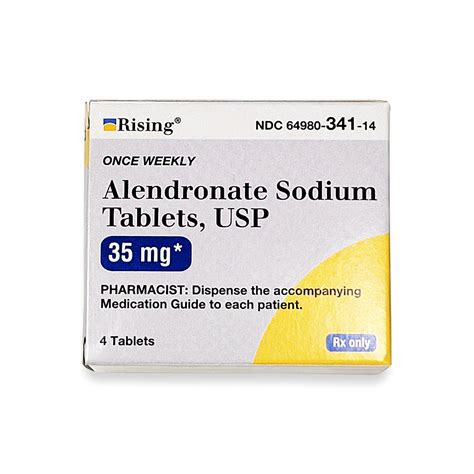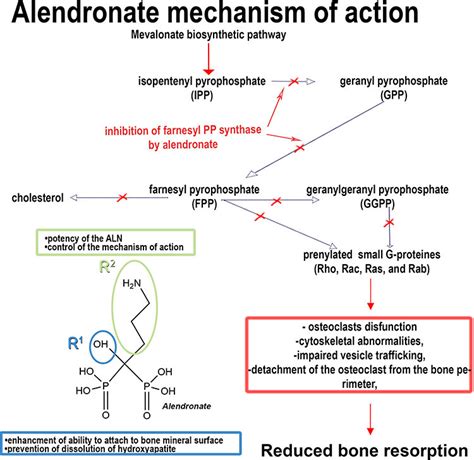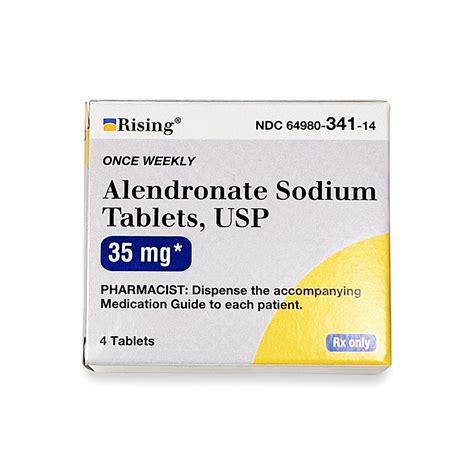Intro
Discover how Alendronate Sodium works through 7 key mechanisms, including bone density improvement, osteoporosis treatment, and fracture prevention, leveraging its pharmacological properties as a bisphosphonate to regulate bone metabolism and enhance overall skeletal health.
The importance of maintaining strong and healthy bones cannot be overstated, especially as we age. Osteoporosis, a condition characterized by the weakening of bones, can lead to increased risk of fractures and other complications. One of the key medications used to treat and prevent osteoporosis is Alendronate Sodium. This article will delve into the details of how Alendronate Sodium works, its benefits, and what patients can expect from treatment.
Alendronate Sodium is a bisphosphonate, a class of medications that are widely used for the treatment and prevention of osteoporosis. Bisphosphonates work by inhibiting the activity of osteoclasts, cells that break down bone tissue, thereby leading to an overall increase in bone density and strength. Understanding how Alendronate Sodium works is crucial for patients who are considering this treatment option or are already undergoing therapy.
The mechanism of action of Alendronate Sodium involves several key steps and pathways that ultimately lead to improved bone health. By understanding these mechanisms, patients and healthcare providers can better appreciate the benefits and potential side effects of this medication. Furthermore, knowing how Alendronate Sodium works can help in making informed decisions about treatment options for osteoporosis and related conditions.
Introduction to Alendronate Sodium

How Alendronate Sodium Works

Benefits of Alendronate Sodium
The benefits of Alendronate Sodium are multifaceted and significant. Key among these benefits is the reduction in the risk of vertebral and nonvertebral fractures, which are a major concern for individuals with osteoporosis. By increasing bone density, Alendronate Sodium also improves the overall strength and integrity of bones, reducing the risk of fractures and related complications. Additionally, the medication has been shown to be effective in treating and preventing osteoporosis in a variety of patient populations, including postmenopausal women and men with osteoporosis.Working Mechanisms of Alendronate Sodium

Steps for Effective Treatment with Alendronate Sodium
For patients to derive the maximum benefit from Alendronate Sodium, several steps and considerations are important: - **Proper Administration:** Alendronate Sodium should be taken according to the prescribed instructions, typically first thing in the morning on an empty stomach with a full glass of water. Patients should remain upright and not lie down for at least 30 minutes after taking the medication to reduce the risk of esophageal irritation. - **Dietary Considerations:** Calcium and vitamin D supplements can interfere with the absorption of Alendronate Sodium. Patients should consult with their healthcare provider about the timing of these supplements. - **Regular Monitoring:** Regular monitoring of bone density and assessment of fracture risk are crucial for evaluating the effectiveness of treatment and making adjustments as necessary.Practical Examples and Statistical Data

Side Effects and Considerations
While Alendronate Sodium is generally well-tolerated, it can cause side effects, including gastrointestinal upset, musculoskeletal pain, and, rarely, osteonecrosis of the jaw. Patients should discuss any concerns or side effects with their healthcare provider, as adjustments to treatment may be necessary. Additionally, the long-term use of bisphosphonates like Alendronate Sodium has raised questions about the potential for oversuppression of bone turnover, although this remains a topic of ongoing research and debate.Conclusion and Future Directions

Engagement and Next Steps

What is the primary mechanism of action of Alendronate Sodium?
+Alendronate Sodium works by inhibiting osteoclast-mediated bone resorption, leading to an increase in bone mass and mineral density.
What are the benefits of using Alendronate Sodium for osteoporosis treatment?
+The benefits include a reduction in the risk of vertebral and nonvertebral fractures, increase in bone density, and improvement in overall bone health.
How should Alendronate Sodium be taken to ensure proper absorption and minimize side effects?
+Alendronate Sodium should be taken first thing in the morning on an empty stomach with a full glass of water, and the patient should remain upright and not lie down for at least 30 minutes after taking the medication.
